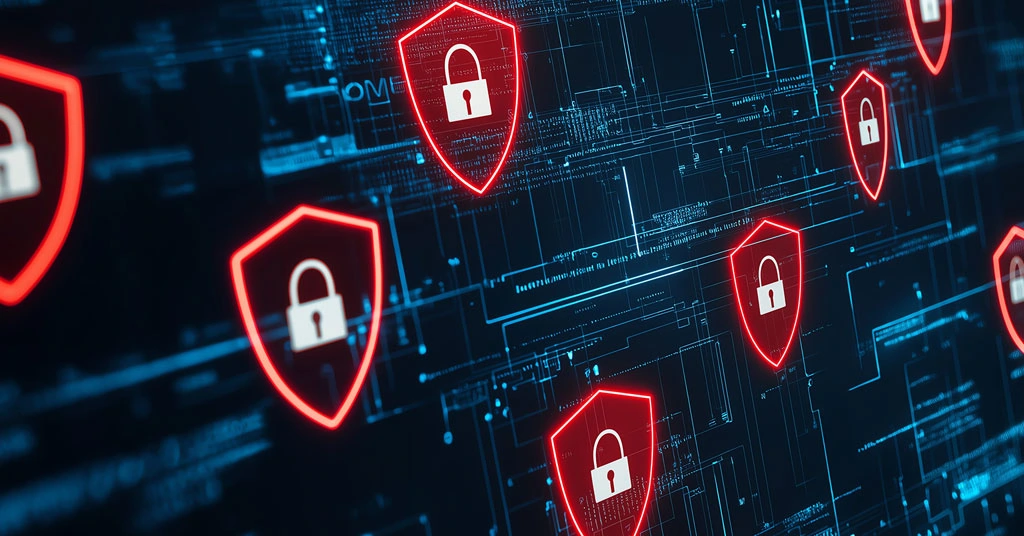
Mission-Critical Operations Demand Secure Collaboration
Editor’s Note: This article is part of Mattermost’s RSA Conference 2025 content series, highlighting the operational realities facing today’s cybersecurity leaders. We’ll be on-site at RSAC 2025 and invite you to contact us to explore how secure real-time collaboration can help close the gap between threat and response.
Risk Management is critical for mission operation continuity, and Government agencies across the Defense, Federal, and Intelligence Communities (IC) deserve complete risk management in their collaboration hub. When commercial collaboration platforms aren’t designed from inception to deploy in classified environments and enforce complete security compliance, it isn’t surprising to see those tools fail to meet ever-evolving cyber security threats.
In today’s dynamic threat landscape, every role within Government — whether in policy, logistics, development, or intelligence — is a target for threat actors because they all contribute to the broader mission. In fact, in 2023, the U.S. Government experienced over 32,000 cyber-attacks, primarily targeting defense, critical infrastructure, and federal systems. These threats are no longer theoretical, and collaboration platforms will continue to be increasingly attractive attack vectors for access to mission-critical data.
Compromised communication and collaboration in national security operations across the Defense, Federal, and Intelligence Communities (IC) can undermine Command and Control (C2), disrupt mission continuity, and increase operational risk. As cyber threats escalate and operations grow more complex, the pressure to coordinate in real-time while ensuring compliance, security, and operational readiness also increases.
This is exactly why Government operations require a centralized, secure collaboration hub that goes beyond just chat and file sharing. A platform that adapts to how teams already work, supports evolving workflows, and protects data at every step is critical to mission success today and in the future. Yet, despite knowingly operating in this harsh threat landscape, many agencies continue to rely on commercial collaboration platforms that were never designed for classified environments, tactical edge communication, or high-trust operations. The result? Compromised missions and increased vulnerabilities.
In contrast to weaknesses presented by legacy systems — including lack of secure interoperability and siloed communications that slow operations, compromise situational awareness, and increase risk of data leaks — Mattermost customers receive comprehensive data sovereignty and remain confident in mission operations continuity because their collaboration hub is effective, efficient, compliant, and, most importantly, secure.
“The Federal Bureau of Investigation (FBI) and the Cybersecurity and Infrastructure Security Agency (CISA) reported that since January 2024, the U.S. Government has publicly identified that adversaries or malicious actors have aggressively targeted U.S. critical infrastructure…”
– Department of Defense Inspector General, January 2025
Commercial Collaboration Tools Fall Short
Popular commercial platforms (Slack, Microsoft Teams, et al) were well-designed for enterprise productivity, but not meant to meet the demands of zero-trust, high-security operations. Here’s where they fail to meet operational standards and Authorization to Operate (ATO) requirements:
- Third-party data hosting: Most commercial tools store data in public cloud environments, with limited options for sovereign control, on-prem deployment, or adherence to Defense Information Systems Agency (DISA) Security Technical Implementation Guides (STIGs).
- Limited auditability: Inadequate logging and monitoring capabilities make it difficult to establish a chain-of-custody or support After-Action Reviews (AARs).
- Inadequate access controls: Without fine-grained Role-Based Access Control (RBAC), these tools cannot enforce security boundaries critical to mission integrity.
- Lack of air-gapped support: Defense operations frequently require fully disconnected networks to maintain data integrity and meet compliance requirements; something commercial tools are not designed to support.
Unauthorized Tools Fill Mission Needs…& Increase Risk
Despite strict security protocols, unauthorized tool use remains a significant risk within DoD environments. Personnel often circumvent approved systems when operational urgency demands quick solutions, especially when established platforms are cumbersome or lack real-time capabilities. This phenomenon, often described as “shadow IT,” is not merely a policy violation, it’s an operational threat. To address this problem, we must first understand what motivates users to rely on unapproved tools.
- Mission Urgency: In high-stress operational environments, personnel are often forced to prioritize mission execution over compliance, resulting in unauthorized tool use that violates ATO standards.
- User Experience Gaps: Collaboration tools that fail to meet the workflow requirements of tactical and operational teams are routinely bypassed for convenience, even when doing so violates security protocols.
- Disconnected or Degraded Environments: When connectivity is compromised, personnel often resort to ad hoc communication methods, including text messages, personal emails, or unauthorized communication applications (e.g., Signal).
Shadow IT is not just a compliance issue; it is a direct threat to operational readiness and continuity borne out of a mismatch between operational needs and available solutions.
“By not mitigating the cybersecurity vulnerabilities affecting Defense Critical Infrastructure (DCI), the Department of the Navy (DON) unnecessarily increased the risk that its DCI could be degraded, incapacitated, or exploited. These vulnerabilities, if left unmitigated, provide adversaries or malicious actors with opportunities to adversely affect critical missions or functions and the DON’s ability to deploy, support, and sustain military forces worldwide.”
– Department of Defense Inspector General, February 2023
Rethink Collaboration for Mission Continuity
Critical national defense missions require an integrated Command and Control (C2) platform capable of supporting tactical, operational, and strategic coordination. Mattermost delivers structured communication workflows essential for maintaining operational readiness and continuity of operations (COOP), including:
- Data Encryption & Sovereign Data Control: Full control over data at rest and in transit, with deployment options that adhere to FedRAMP High and DISA STIG requirements.
- Structured Communication Workflows: Mission threads, channels, and playbooks that ensure alignment across tactical, operational, and strategic levels.
- Audit-Ready Logs & Role-Based Access Control (RBAC): Comprehensive visibility into user actions to support After-Action Reviews (AARs) and maintain compliance.
- Offline & Low-Bandwidth Functionality: Ensures operational continuity in disconnected or denied environments.
Mattermost Is Built for Mission-Critical Collaboration
Mattermost is an American-owned, commercial-off-the-shelf (COTS) solution designed to fulfill defense, intelligence, and federal teams’ needs while operating at the tactical edge. Built for compliance, interoperability, and continuity, Mattermost provides a secure C2 platform that ensures operational readiness for all Government and military organizations. Ready for immediate deployment, Mattermost eliminates the delays and complexity associated with custom-built systems while remaining compliant with historic, current, and future acquisition regulations:
- Supports air-gapped and on-prem deployments: Ideal for classified networks and restricted access zones.
- FedRAMP, IL5, and DISA SRG-aligned options: Designed with federal compliance in mind.
- Custom workflows & DevSecOps integrations: Built-in support for GitLab, Jira, ServiceNow, and command-line tools.
- Structured communications and playbooks: Standardize coordination for incident response, mission briefings, and secure file sharing.
Mattermost transforms collaboration into an operational asset…not a liability.
Heading to RSAC 2025? Let’s Connect.
We’re scheduling on-site meetings with cybersecurity and public sector leaders to explore how Mattermost’s secure collaboration hub enhances operational readiness, maintains continuity of operations (COOP), and meets the compliance standards critical to your mission’s success.




